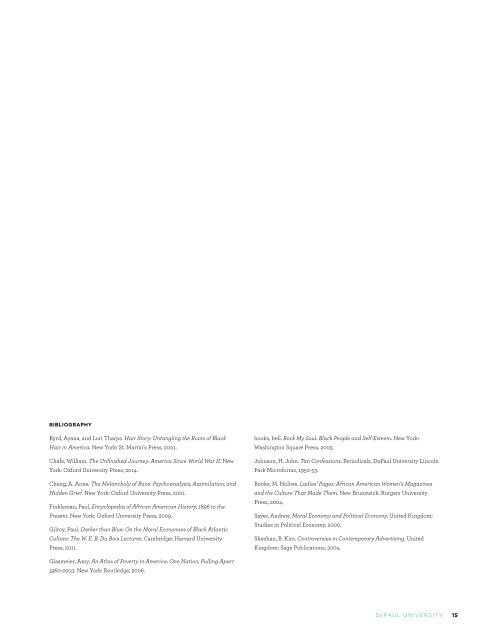UNDERGRADUATE
Ycb5305N2JX
Ycb5305N2JX
Create successful ePaper yourself
Turn your PDF publications into a flip-book with our unique Google optimized e-Paper software.
COKEYS, GONGS, AND THE REEFER MAN: CAB CALLOWAY’S<br />
USE OF STRATEGIC EXPRESSIONISM DURING THE HARLEM<br />
RENAISSANCE<br />
Zoe Krey*<br />
Department of American Studies<br />
During the Harlem Renaissance, writers and intellectuals<br />
such as Langston Hughes, W.E.B. Du Bois, and Claude<br />
McKay sought to define Harlem by providing rich<br />
accounts of the city’s nightlife. Writers of the time<br />
period offered a social commentary on racial and sexual<br />
limitations present in 1920s Harlem. While popular jazz<br />
artists also contributed to Harlem’s culture through their<br />
performances for black audiences in clubs and cabarets,<br />
many of the biggest venues for black performance were<br />
those which served white audiences; in these venues, music<br />
producers carefully packaged black jazz performances as<br />
representations of Harlem that supposedly demonstrated<br />
black people’s “authentic” lives. A shining example of this<br />
careful marketing occurred at the cabaret the Cotton Club.<br />
Situated in the black district of Harlem, the Cotton Club<br />
and its black artists came to exemplify what was perceived<br />
as a “natural” demonstration of black culture for middle<br />
and upper class white socialites. Their performances<br />
allowed white audiences to get a taste of Harlem culture<br />
in a meticulously controlled environment, and to return<br />
to their safe homes via their costly cars at the end of<br />
the night. 1 Jazz musician Cab Calloway’s extraordinary<br />
performances and improvisation ability, both in song and<br />
in dance, became widely popular amongst white audiences<br />
across the nation at the end of the Harlem<br />
FIGURE 1<br />
Cab Calloway in an advertisement featured in Billboard Magazine<br />
in 1942 2<br />
* This paper was written for HON 301, American Popular Culture of the<br />
1890s to 1930s, taught by Allison McCracken, PhD, in fall quarter of 2015.<br />
It was selected as the Richard deCordova Scholarship award recipient<br />
by the Department of American Studies in 2016. McCracken aided in<br />
editing this essay for publication.<br />
1 Shane Vogel, The Scene of Harlem Cabaret: Race, Sexuality, Performance<br />
(Chicago: The University of Chicago Press, 2009), 81.<br />
2 Source: Billboard Magazine. Https://commons.wikimedia.org/wiki/<br />
File:Cab_Calloway.jpg)<br />
16 CREATING KNOWLEDGE


